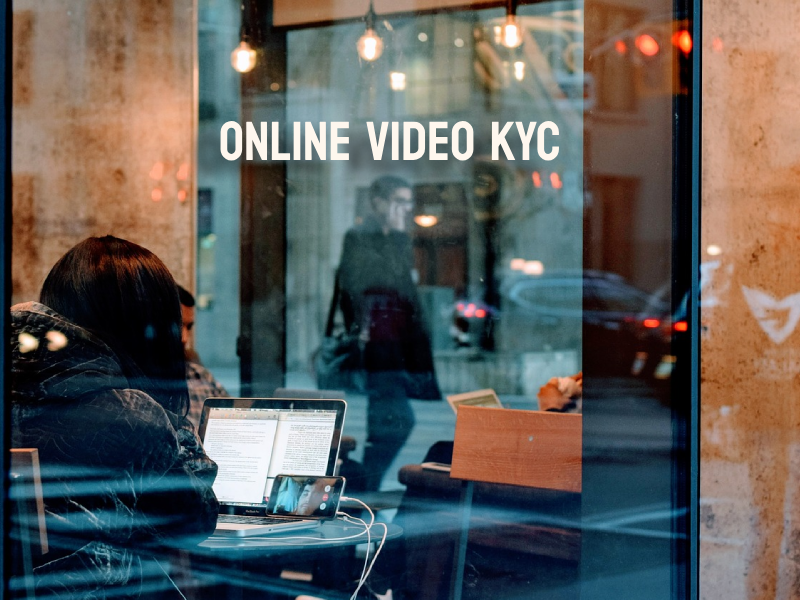The financial industry has suffered significant evolution in the digital age, with outdated brick-and-mortar set-ups giving way to online and mobile banking preferences. The introduction of Online Video KYC (Know Your Customer) changes is a key invention in this revolution. These processes are thoughtful in promising the security of financial institutions and raising client trust. This article argues about Video KYC’s benefits, difficulties, and role in protecting financial institutions’ honesty.
Understanding Online Video KYC
KYC systems are a set of values and processes intended to verify the identification of customers. It’s a serious practice in the financial sector because it helps prevent money laundering, fraud, and other illegal movements. Traditional KYC techniques require physical documents to be submitted, but as technology changed, Online Video KYC became a more suitable and effective alternative.
This method involves live video chats to verify consumers’ identities remotely. During this process, a consumer contacts a skilled representative from the financial institution, who takes them through the verification steps. This agent verifies the legality of documents, performs facial recognition, and answers enquiries to confirm the customer’s identification.
Advantages of Online Video KYC
Improved Security
Online video KYC increases protection by imposing live connections to verify a customer’s identification. It decreases the risk of fraudulent actions when modified or stolen documents are submitted.
Convenience
Clients no more need to physically visit a branch because they can submit documents with Online KYC. This accessibility saves both the customer and the financial institution time and effort.
Worldwide Reach
Financial institutions can onboard customers from several geographical areas using KYC without the need for physical attendance. It increases their consumer immorality and creates new business scenarios for them.
Obedience
Financial organizations are required by law to follow effective KYC processes. Online Video KYC guarantees regulatory agreement while providing a seamless client experience.
Cost Proficiency
Applying this advance KYC technique can save financial organizations money because it excludes the need for physical equipment and staff required for in-person verification.
Challenges for Online Video KYC
Technological Difficulties
Clients will need a solid internet connection, a device with a camera, and technology awareness to conduct Online KYC. It can be hard in locations with insufficient connectivity or among older people who must be aware of the technology.
Data Privacy Issues
When handling sensitive customer data during video chats, privacy concerns get up. Financial organizations must keep the security of these transactions, protect the data that is stored, and follow data security necessities.
Fraud Avoidance
However, Online Video KYC is proposed to stop fraud, and individuals may use advanced tactics to copycat valid clients during the video chat. To frustrate such attacks, financial institutions require durable systems.
User Experience
Possessing a seamless balance between security and a pleasurable client experience might be difficult. L lengthy or complex verification processes may irritate customers, resulting in rejection or frustration.
The Role of Financial Institutions in Ensuring the Security
Checking Identity Robbery
Identity stealing is a major threat in the digital age. The real-time verification of Online Video KYC promises that the person on board is who they claim to be, reducing the danger of stolen identities being used for financial fraud.
Helping in AML Submission
By anti-money laundering (AML) regulation, financial organizations are necessary to monitor and report suspicious transactions. This advance technique supports institutions in recognizing high-risk customers and transactions, allowing them to remain accommodating with AML requirements.
Decreasing Fraud
Traditional KYC methods are helpless to notice fake docs. This risk is moderate through KYC, which allows trained individuals to validate documents and do real-time facial recognition, making it harder for cheaters to access the system.
Building Trust
Building assurance between clients and financial organizations requires a secure and fast onboarding process. Customers are more motivated to participate in long-term financial relationships when they see that an organization takes their safety seriously.
Conclusion
Online Video KYC is changing the client verification setting in the financial business. Its combination of improved security, accessibility, and compliance makes it a popular choice among financial institutions worldwide. Nonstop technology developments, user education, and solid security measures are required to address the issues connected with it. Financial institutions may secure their processes while providing a smooth experience for their clients in the digital era using this creative customer verification method.
Also, Read: Facial Verification Technology As An Industry Trendsetter For 4 Businesses








